Modifying the scissor jack.
Part III is here.
BMW Airheads appear to be variously balanced when on the center stand. My 1975 R90/6 rests on the rear tire, if lightly so. By contrast, the two R100RTs (1989 and 1994) I have owned rested on the front tire, likely owing to the weight of the large touring fairing on the front axle. Thus, for my 1975, I have to get the weight off the rear wheel if I am to remove it from the bike for tire change or maintenance of the taper roller bearings in the hub. This is how I used to do that in the pre-Handy lift days:
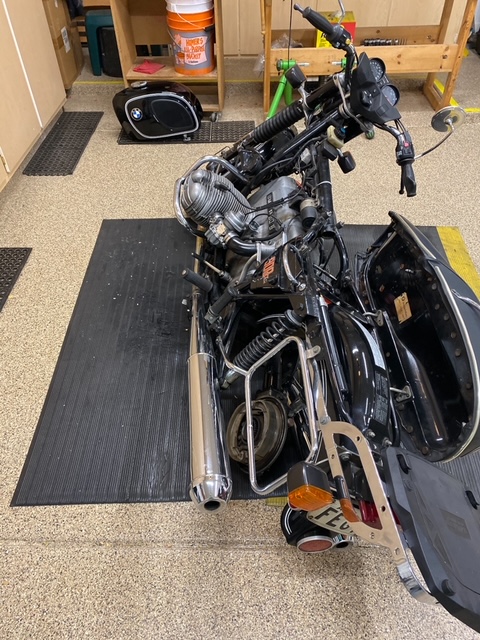
Rear wheel removal before the motorcycle lift arrived.
There are many ‘motorcycle’ jacks on Amazon, purportedly designed for two wheeled use. They are mostly flawed as the scissored assembly does not rise centrally to the base, so the higher you go the tippier the whole thing becomes. Plus, at $80 and up they are seriously overpriced. Enter Harbor Freight tools, purveyor of all that is cheap steel and labor from China. Hey, try and find a jack which is not made there. You can bet the one in your fancy top of the line BMW automobile comes from there, too,
They offer a variety of scissor and floor jacks and I opted for the cheapest scissor design, which ran me just $26 with tax, picked up at the local Phoenix store. The greater lifting capacity of the costlier one makes no sense in this application.
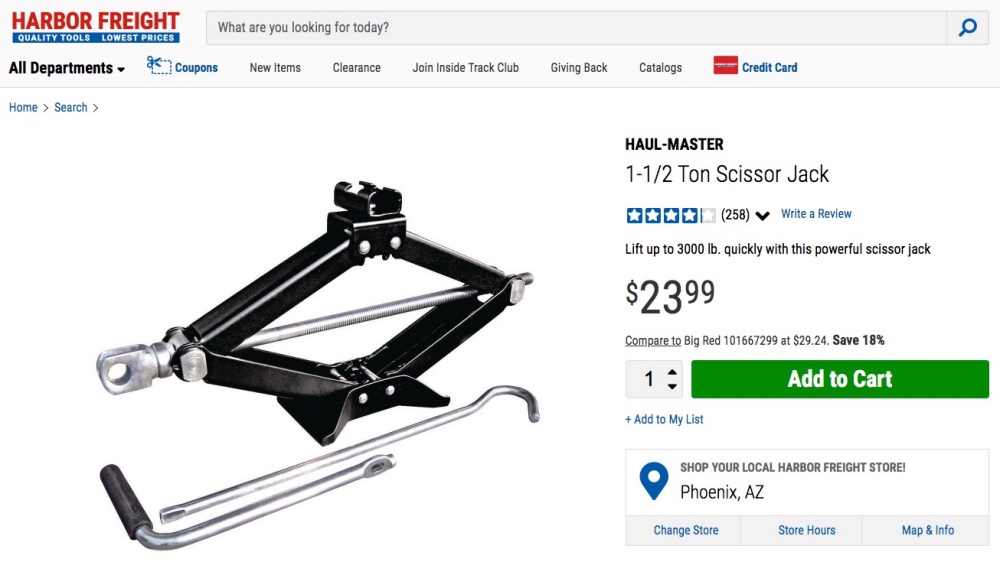
Click the image to go to the Harbor Freight site.
However, several modifications are required to make the tool functional for use on the Handy motorcycle lift.
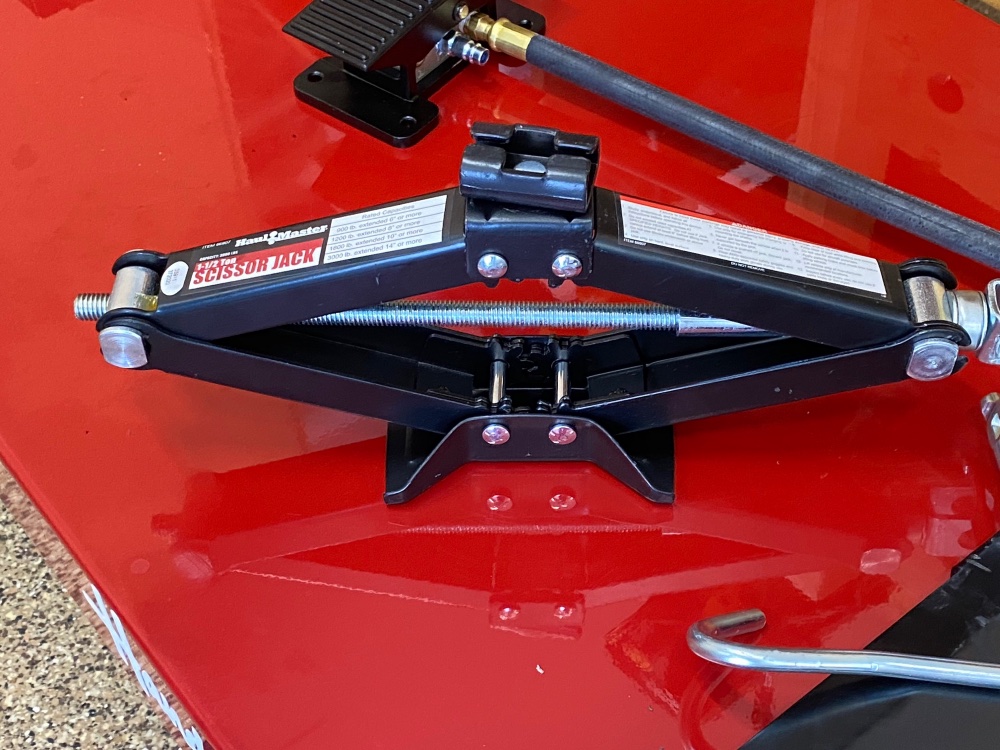
The Harbor Freight jack.
The jack ships with a thoroughly inept hook and rod torquing device to raise and lower the saddle. It comes apart all too easily and is an aesthetic horror show. So I expoxied (using JB Weld – be sure to use the linked product. Their other lines are weaker) a 12mm 3/8″ drive socket into the end jaw which permits attachment of a regular ratchet with an extension. JB Weld, a superb 2-part epoxy, is more than up to this, though a weld would have been nicer. Sadly, I have no welding gear or skills.
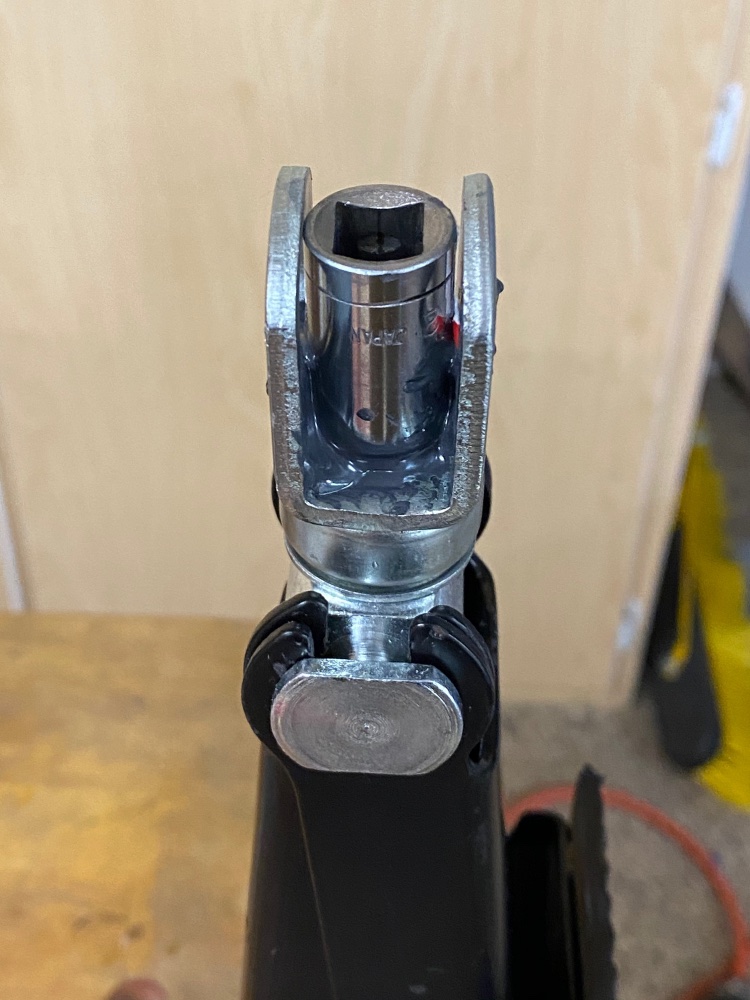
12mm, 3/8″ drive socket epoxied into the drive jaws.
An electric drill-socket adapter will speed elevation to
approximate height before hand cranking takes over.
Next, a broader, more stable saddle has to be made to supplement the stock steel one which is intended to locate under a car’s longitudinal rails. A small piece of hard oak does just the trick, and a few minutes with a Makita chop saw and overnight glueing with wood glue is the answer. Oak machines to a very sharp edge so I have knocked off those edges on a Makita flat belt sander. Note that I have also glued a small rubber pad to the metal foot of the jack, to avoid marring the surface of the Handy lift table and to confer anti-slip properties. The glue used was 3M Weatherstrip adhesive.
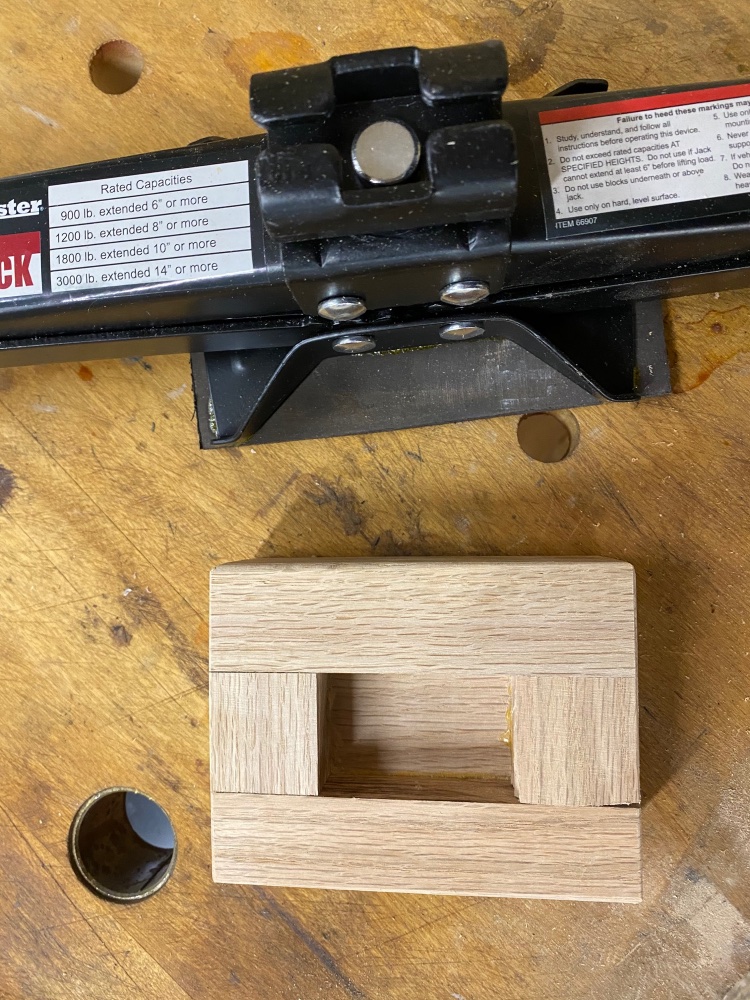
The oak saddle extension.
This fits perfectly atop the stock saddle, provides a broad area for the sump of the motorcycle to rest on, and will not mar the finish; I will epoxy it to the stock saddle for a permanent installation:
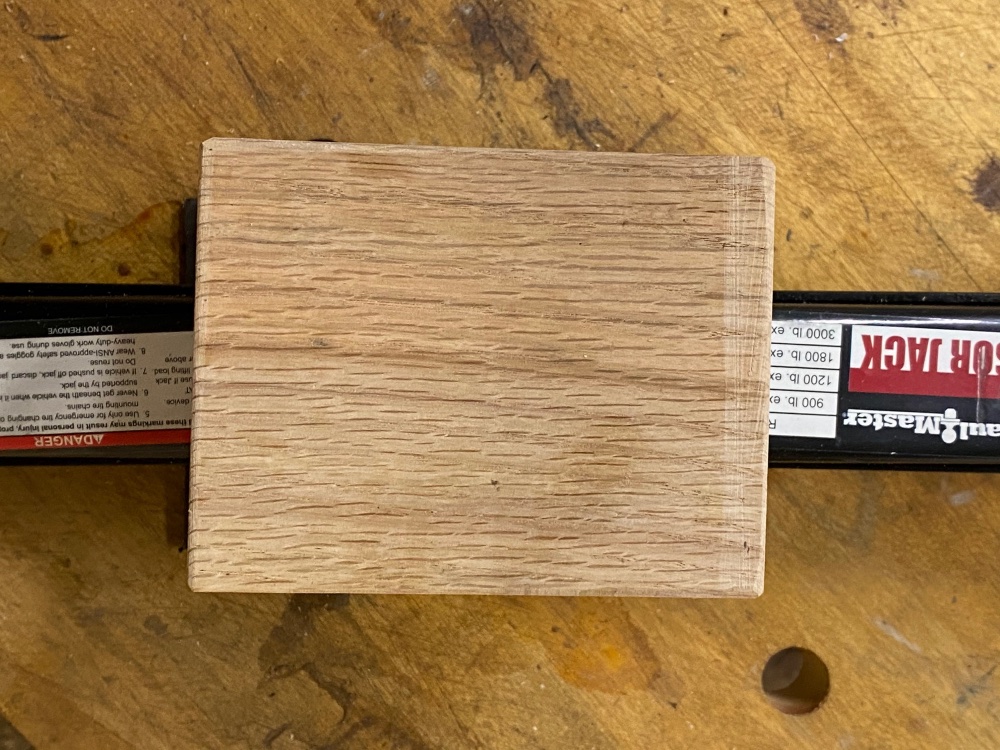
The oak saddle extension in place.
Finally, the screw in the jack needs lubrication and the instruction booklet advises the use of a light oil. This is exactly wrong. What is called for is a thick grease, and I use LiquiMoly LM47, an excellent all purpose grease where high temperatures are not involved:
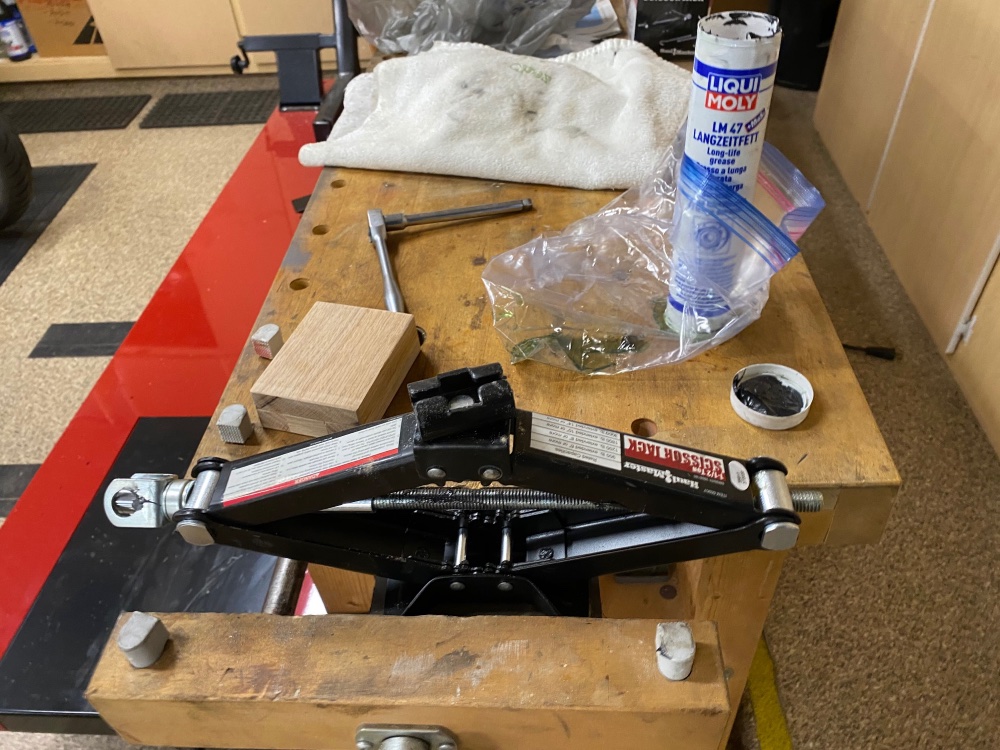
Screw greased with LiquiMoly LM47.
The jack is now ready for use with the motorcycle on the Handy lift.

The extended saddle painted red, and epoxied in place.
The width is identical to that of the airhead’s oil pan, to provide maximum contact area. The lifting point will be aligned with the center of gravity of the motorcycle, providing maximum safety. The transverse dimension of the red top is small enough that it will permit full deployment of the center stand once the motorcycle has been lifted, with the front wheel secured in the lift’s vise.
In Part V I look at how the jack is used on the motorcycle lift to remove the front and rear wheels as well as aiding in painless deployment of the center stand on the lift.